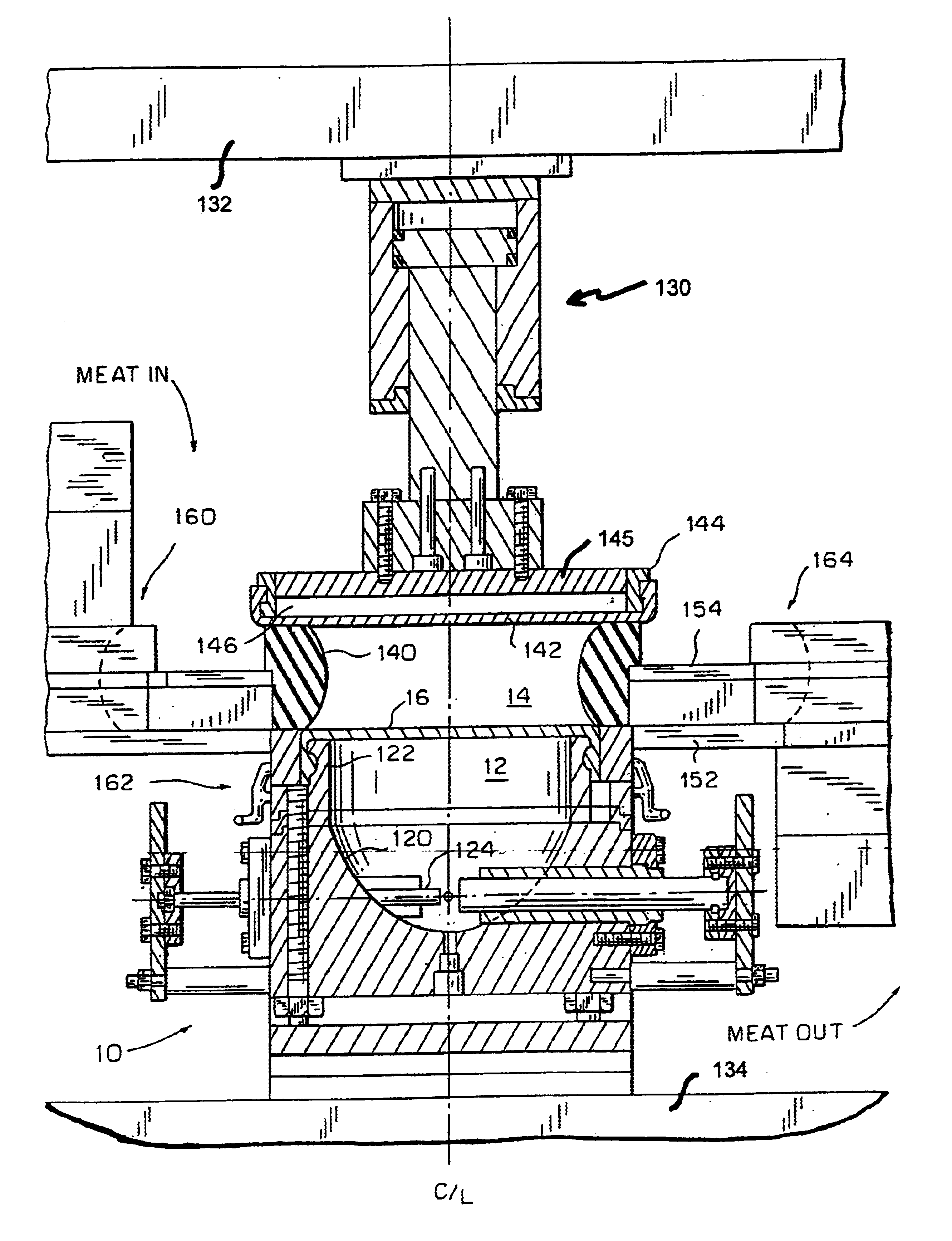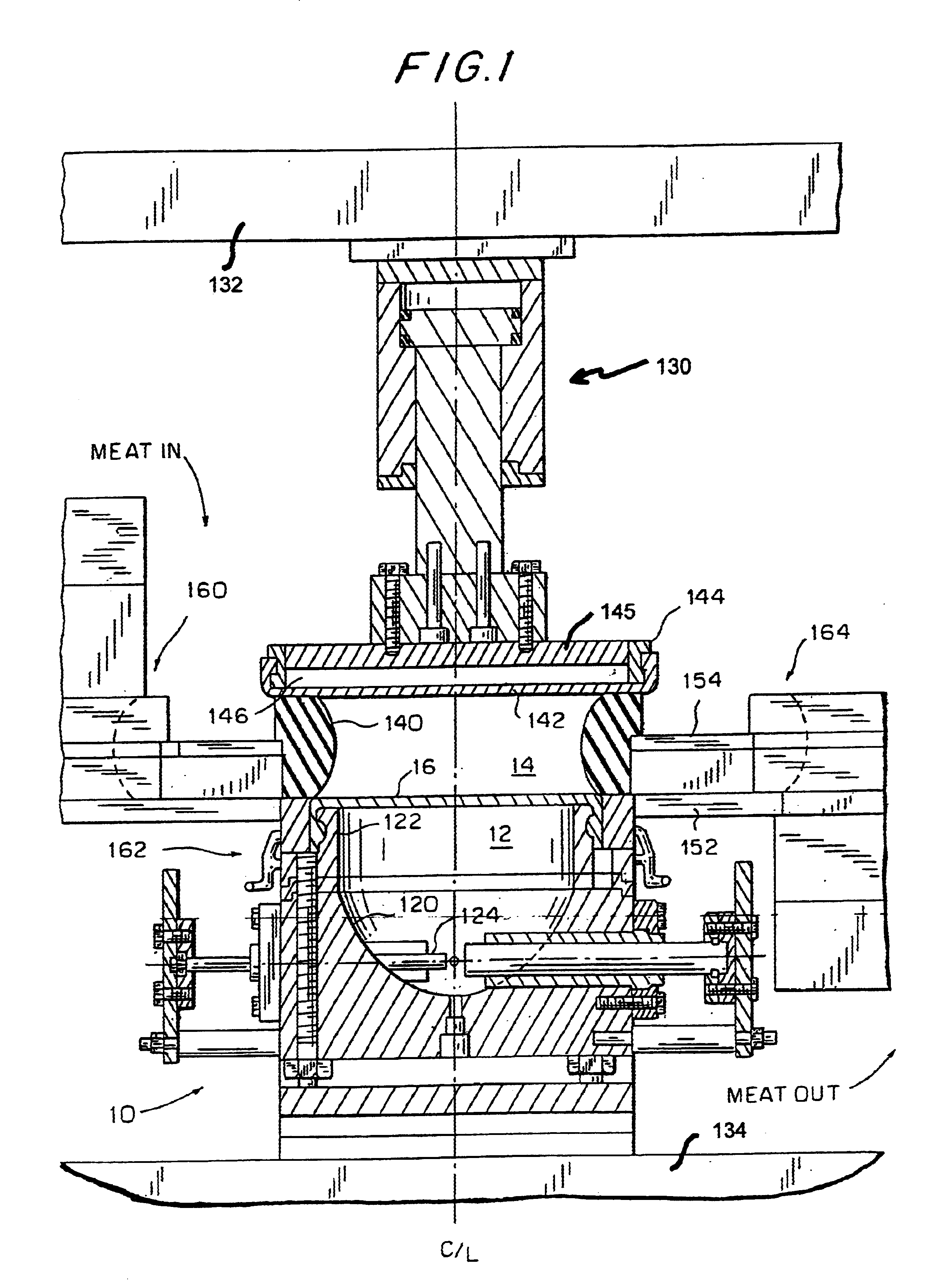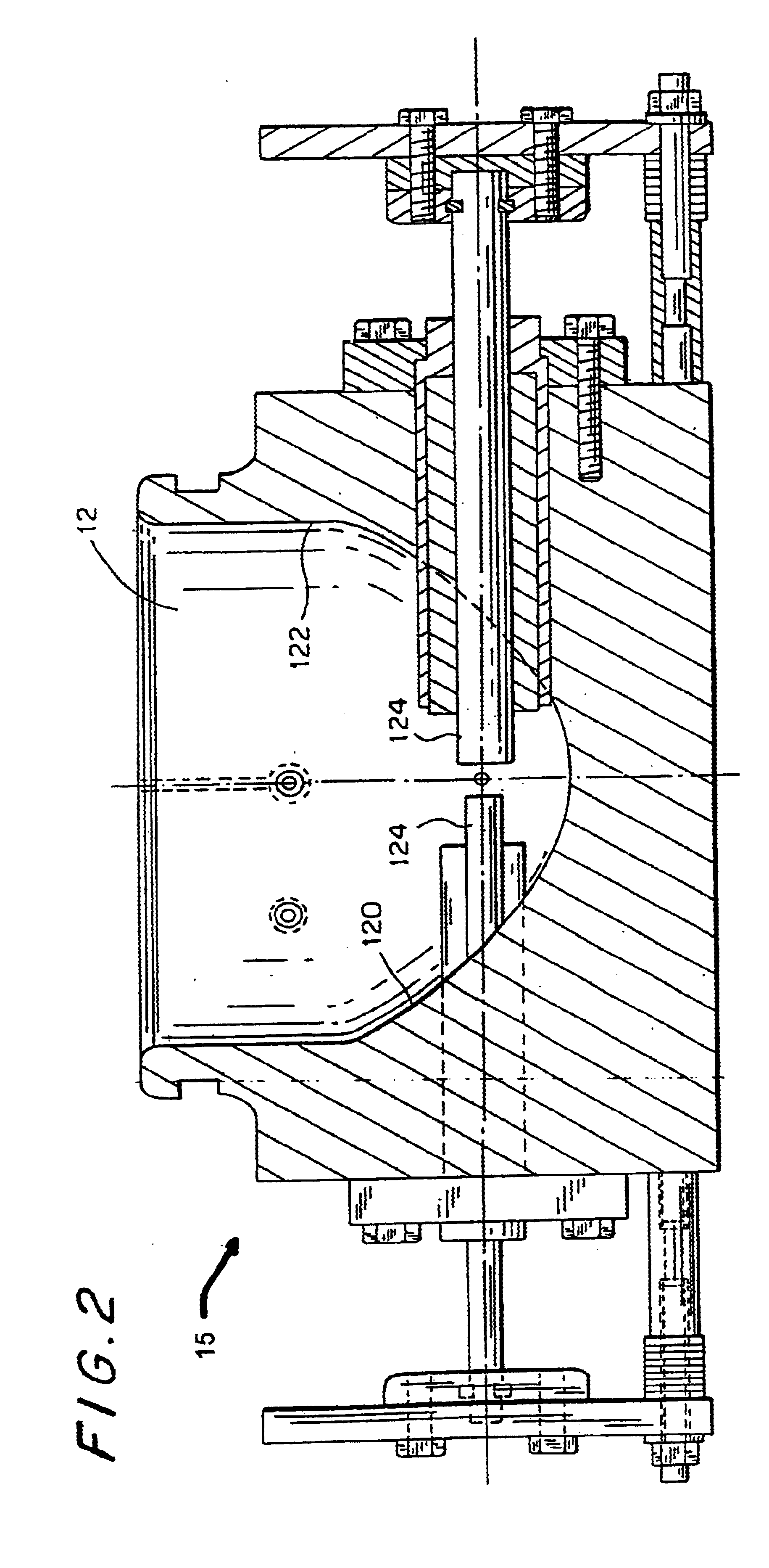Shock-wave meat treatment
a technology of shock wave and meat, applied in the field of shock wave meat treatment, can solve the problems of high equipment cost, inconvenient use, and inconvenient use, and achieve the effects of reducing the cost of equipment, and improving the quality of mea
- Summary
- Abstract
- Description
- Claims
- Application Information
AI Technical Summary
Benefits of technology
Problems solved by technology
Method used
Image
Examples
Embodiment Construction
The attached FIG. 1 of a preferred embodiment according to the present invention shows a meat treatment apparatus 10 comprising two main chambers, namely the lower capacitor discharge or firing chamber 12 and immediately thereabove the food processing chamber 14, supported by a lower support structure 134.
The capacitor discharge chamber 12, filled with water, brine, or another so-called incompressible fluid, consists of a parabolic shaped bowl 120 at the bottom and a substantially circular-cylindrical upper portion 122 which may be slightly cone shaped wherein the angle the side of the cone makes with the center line is less than 15.degree., preferably less than 8.degree. and most preferably 0.degree., i.e. the upper portion 122 is preferably substantially circular-cylindrical, it being understood however that the circular-cylindrical form need not be a perfect circular-cylinder.
Two electrodes 124 enter the parabolic shaped bowl 120 horizontally and are adapted to deliver 12-19 Kj. ...
PUM
 Login to View More
Login to View More Abstract
Description
Claims
Application Information
 Login to View More
Login to View More - R&D
- Intellectual Property
- Life Sciences
- Materials
- Tech Scout
- Unparalleled Data Quality
- Higher Quality Content
- 60% Fewer Hallucinations
Browse by: Latest US Patents, China's latest patents, Technical Efficacy Thesaurus, Application Domain, Technology Topic, Popular Technical Reports.
© 2025 PatSnap. All rights reserved.Legal|Privacy policy|Modern Slavery Act Transparency Statement|Sitemap|About US| Contact US: help@patsnap.com



